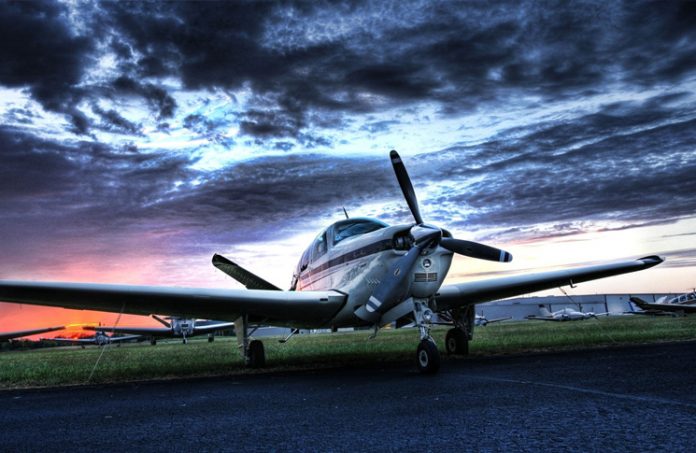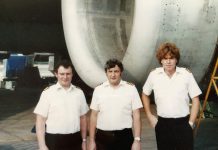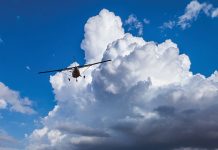By Charles O’Neil
As I write about this close call, I have been flying for 58 years and am enjoying it now as much as ever.
‘Close calls’ may prefer to hear about recent incidents, not ones from many years ago; however, the lessons from my very close shave 40 years ago are as relevant and important today as they were when it happened. And telling them may save your life!
I learnt to fly in a Tiger Moth and a Chipmunk, with some basic aerobatic training in each, before graduating to Cessnas, Pipers and Beechcraft.
My instructor was very strong on ‘airmanship’. He said being able to fly well technically was essential of course, but airmanship was vital. It included being pedantic about pre-flight and in-flight checks: flight planning, NOTAMS, the weather, frequencies, NAVAIDS, fuel management, pre-flight run-ups, precision circuits, etc.
Also, never cut short any procedures, stick strictly to the Visual Flight Rules, be decisive about turning back early enough from looming non-VFR conditions and ignore passenger pressures (it’s an easy decision—you’re a long time dead’). Human factors! And never ever fly into or even close to a cumulonimbus cloud—avoid their outer edges by at least
30 nm, preferably more.
One day in the Tiger Moth my instructor asked me to fly through a large woolly but harmless cloud with a base about 4000 feet AGL. We came out inverted and I did not have a clue that he had gently nosed down and rolled it over, as I was not watching my AH or altimeter. I had been looking out of the cockpit for holes in the cloud.
He wanted to scare me and give me a good lesson and he certainly did, because I did not feel any sensation at all as we rolled over.
Having received this very thorough basic training, especially about ‘airmanship’, I was so embarrassed about my own stupidity with the following close call that I did not mention it to anyone for several years. At the time my family, friends and business colleagues thought I was an experienced and safe pilot—how wrong they were!
At the time, I had been flying for 18 years and had around 2500 hours. I was flying two or three days a week, supervising construction projects in NSW and Queensland, based in Tamworth.
On this day I departed Tamworth at 0600 in our Beech Bonanza G35 V-tail and flew to a project near Toowoomba, stayed a couple of hours and flew into Brisbane for a meeting. At 1600, I departed for Tamworth, tracking south-west and climbing to 8500. It was a beautiful clear day except for some major cumulus build-ups over the McPherson Range, about 60 nm south-west, directly on track.
I levelled out at 8500 and switched on the auto pilot, to find it was U/S—a big surprise. As I approached the clouds, I noticed there was about 2000 feet of clear air between their base and the mountain tops. I steered between two big build-ups, which were maybe 25 nm apart (not nearly enough) and consciously decided to fly through a wispy bit of cloud to the side of one of them to maintain track, thinking it would take maybe 10 or 15 seconds.
But it didn’t. And then I found my AH was also U/S. Unbelievable—how did I miss that in my pre-take-off check?
I got sucked into a massive updraft and was suddenly rocketing up to 12,000 feet; then into a downdraft back to 9000, then up again. I knew I was in big trouble and would almost certainly lose control, so I lowered the wheels, cut to idle and put down 20 degrees of flap—to be as slow as possible to counter the shear forces between the up and down draughts—tightened my belt and waited, trying to stay calm and anticipate how I would come out of the cloud and how to recover.
I assumed a spiral dive and knew that I would have to react very fast because 2000 feet is not much altitude in which to recover. And just then Brisbane Control called and asked, ‘Operations normal?’ ‘Affirmative, just avoiding cloud’. (We did not have Mode C transponders then.)
And sure enough, I came out of the cloud in a spiral dive. I had felt nothing at all to indicate this was coming, even though I was expecting it. It still felt like I had the aircraft under control, straight and level. I corrected a few hundred feet above the tops and headed for home, shaking like a leaf for the next one and a half hours, with my head spinning about how lucky I was to survive and thanking my instructor enormously for his good aerobatics training.
Next morning, I flew again at 0700, not because I was going anywhere but if I had not, then I probably would never have flown again.
I broke all the rules—talk about complacency and carelessness from too much flying!
Did it make me a better pilot? Absolutely. I have been really pedantic about everything ever since and have enjoyed another 40 years of safe flying.





